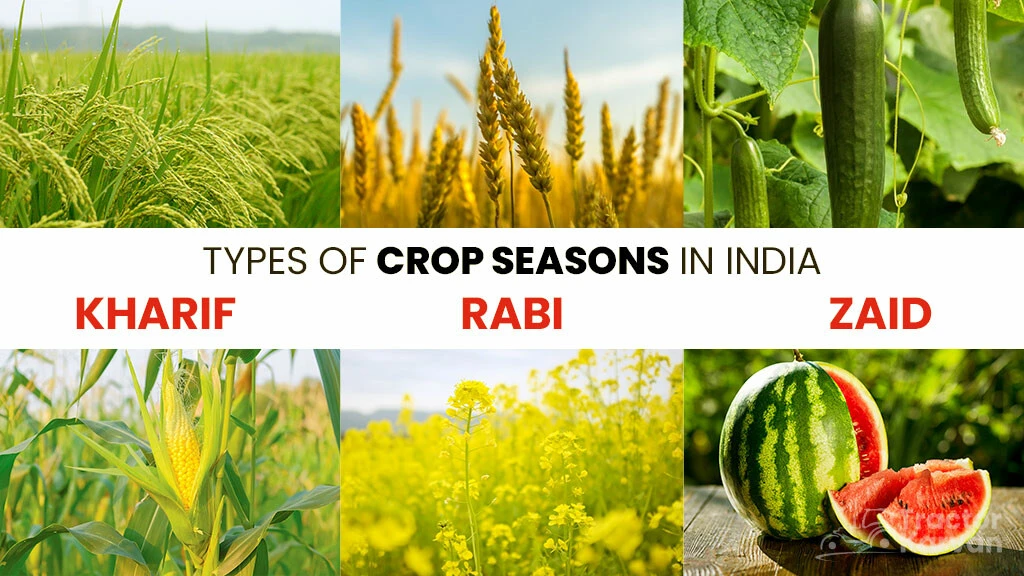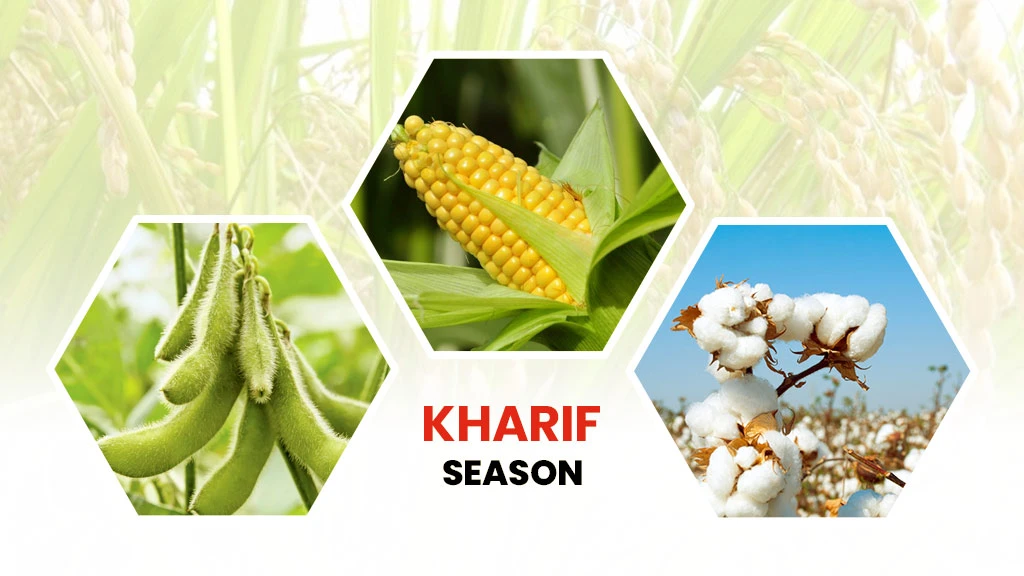Types of Crop Seasons in India: Kharif, Rabi and Zaid

Table of Content
- Overview of Seasons in India
- Types of Crop Seasons in India
- Difference Between Kharif & Rabi Crops
- Conclusion
Overview of Crop Seasons in India
India is an agriculture-rich country where most of the population depends on agriculture for their livelihood. Agriculture also plays a big role in sustaining the Indian economy. Indian agriculture witnesses three major crop seasons: Rabi, Kharif, and Zaid. It is important for farmers to have an understanding of these three seasons to optimise their farming productivity.
Types of Crop Seasons in India
There are three primary cropping seasons in India:
- Kharif
- Rabi
- Zaid
Kharif Season

Kharif is an Arabic word which means fall. The kharif season, also called the monsoon season, starts in June and lasts until October. The crops in this season are sown at the start of the monsoon season and harvested at the end. Examples of Kharif season crops which require lots of water are rice, sugarcane, maize, cotton, jute, soybeans, groundnuts, etc.
Time Period & Crops Grown in Kharif Season
|
Season |
Time Period |
Crops |
States |
|
Kharif |
Sowing time: June to July Harvesting time: September to October |
Rice, Maize, Cotton, Urad, Jowar, Groundnut, Soybean. |
Tamil Nadu, Telangana, West Bengal, Maharashtra, Kerala, and Coastal Regions of Odisha |
Rabi Season

Rabi comes from the Arabic word, which means “spring.” It occurs just after the monsoon season. The rabi season, also known as the winter season, starts in October and lasts until March. The popular crops grown in the Rabi season are wheat, mustard, barley, gram, peas, etc.
Time Period & Crops Grown in Rabi Season
|
Season |
Time Period |
Crops |
States |
|
Rabi |
Sowing time: October to December Harvesting time: March to April |
Wheat, Mustard, Barley, Peas, Gram |
Uttar Pradesh, Punjab, Haryana, Uttarakhand, Himachal Pradesh, Jammu & Kashmir |
Zaid Season

The crops cultivated between Rabi and Kharif are known as filler crops. The Zaid season, also called the summer season of India, starts in March and lasts till June. The Zaid crops require warm and dry weather to grow and mature as they need less water. They are sown in March and harvested in June.
The popular crops grown in this season are watermelon, muskmelon, pumpkin, cucumber, bitter ground, etc.
Time Period & Crops Grown in Zaid Season
|
Season |
Time Period |
Crops |
States |
|
Zaid |
Sowing time: March to April Harvesting time: June (Between Rabi and Kharif Crops) |
Vegetables, seasonal fruits, fodder crops |
Most of the Northern states and North-Western States. |
Difference Between Rabi and Kharif Crops
The major difference between Rabi and Kharif crops from farming perspective is the sowing and harvesting time. The top four differences between Kharif and Rabi crops are shown in the table below:
|
Factors |
Kharif Crops |
Rabi Crops |
|
Sowing Time |
Kharif crops are sown at the start of the rainy season, which is from June to July. |
Rabi crops are sown from October to December at the start of winter when the monsoon ends. |
|
Water Resource |
Kharif crops depend on rainfall patterns, and they need rainwater for growth. |
Rabi crops rely on irrigation for growth. Since Indian winters are dry, they require minimal and managed irrigation. |
|
Harvesting Time |
Kharif crops are harvested from September to October. |
Rabi crops are harvested from March to April. |
|
Crop Examples |
The popular Kharif crops are rice, maize, bajra, cotton, groundnut, etc. |
The popular Rabi crops are wheat, barley, mustard, etc. |
Conclusion
The variation in soil, monsoon patterns, and geography makes the Indian climate suitable for a wide variety of crops. It allows the farmers to grow different crops in their particular region according to their climatic conditions. The crop season plays a major role in sustaining the food security in the country. With proper knowledge of crop seasons and availability of farm implements, farmers can achieve better productivity.
Frequently Asked Questions On Types of Crop Seasons in India: Kharif, Rabi and Zaid
1. How many crop seasons are there in India?
There are three crop seasons in India: Rabi, Kharif and Zaid.
2. Which are the two main cropping seasons in India?
Rabi and Kharif are the two main cropping seasons in India.
3. What is the difference between rabi and kharif crops?
The primary difference between rabi & kharif crops is the sowing and harvesting time. Kharif crops are sown between June and July and harvested between September and October, whereas Rabi crops are sown between October and December and harvested between March and April.
4. Which crop is both Rabi and Kharif?
Paddy crop is grown in both the Rabi and Kharif seasons.


Related Blogs















